Southwest Michigan field crops update – August 22, 2024
Seed fill continued in soybeans. Most corn is between R4 (dough) and R5 (dent).

Weather
The Canadian airmass this past week brought in cool temperatures, and the whole state received rainfall over the weekend. Over the next 24 hours and into next week, temperatures are expected to increase and return to typical August temperatures and humidity. Little precipitation is predicted for the next week, although there is the possibility of some isolated showers.
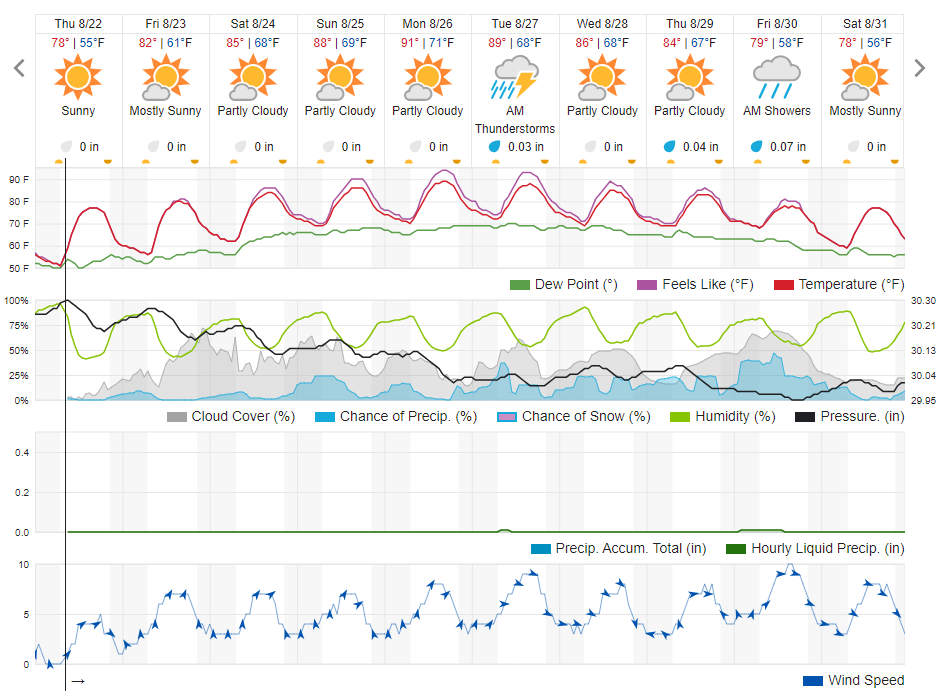
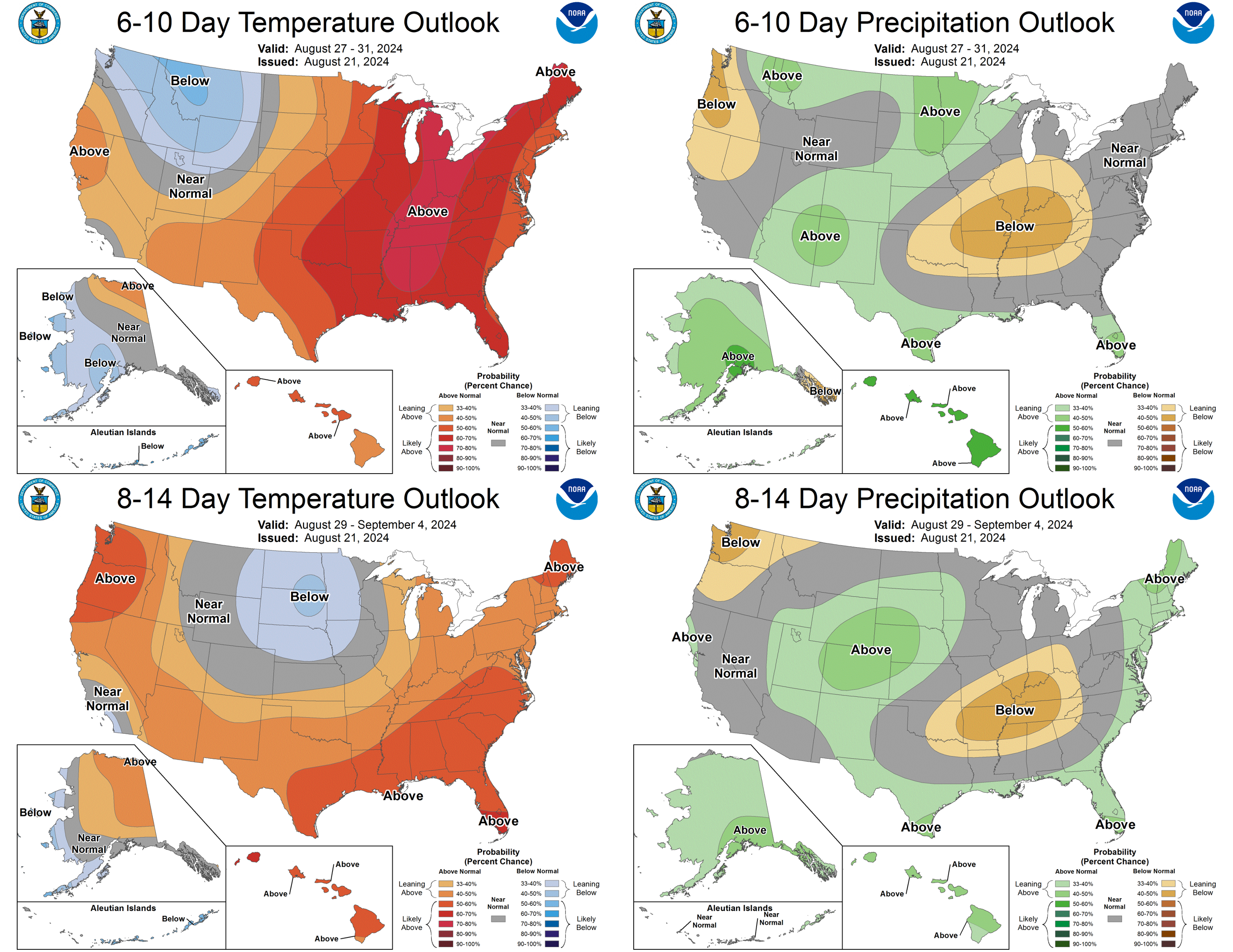
Crops and pests
Soybeans are mostly between R5 (beginning seed) and R6 (full seed). Those that have reached R6 are now progressing toward R7, which is one pod with mature color anywhere on the plant. R6.5 is the target stage for applying desiccants as a harvest aid in soybeans. At R6.5, the protective membrane within the pod easily separates from the seed. Soybean desiccation is a very rare practice in Michigan, but in recent years it has garnered more attention. For those interested in learning more about soybean desiccation, there will be a demonstration and speakers about it at the Soybean Harvest Equipment Field Day in Lenawee County on Sept. 26.
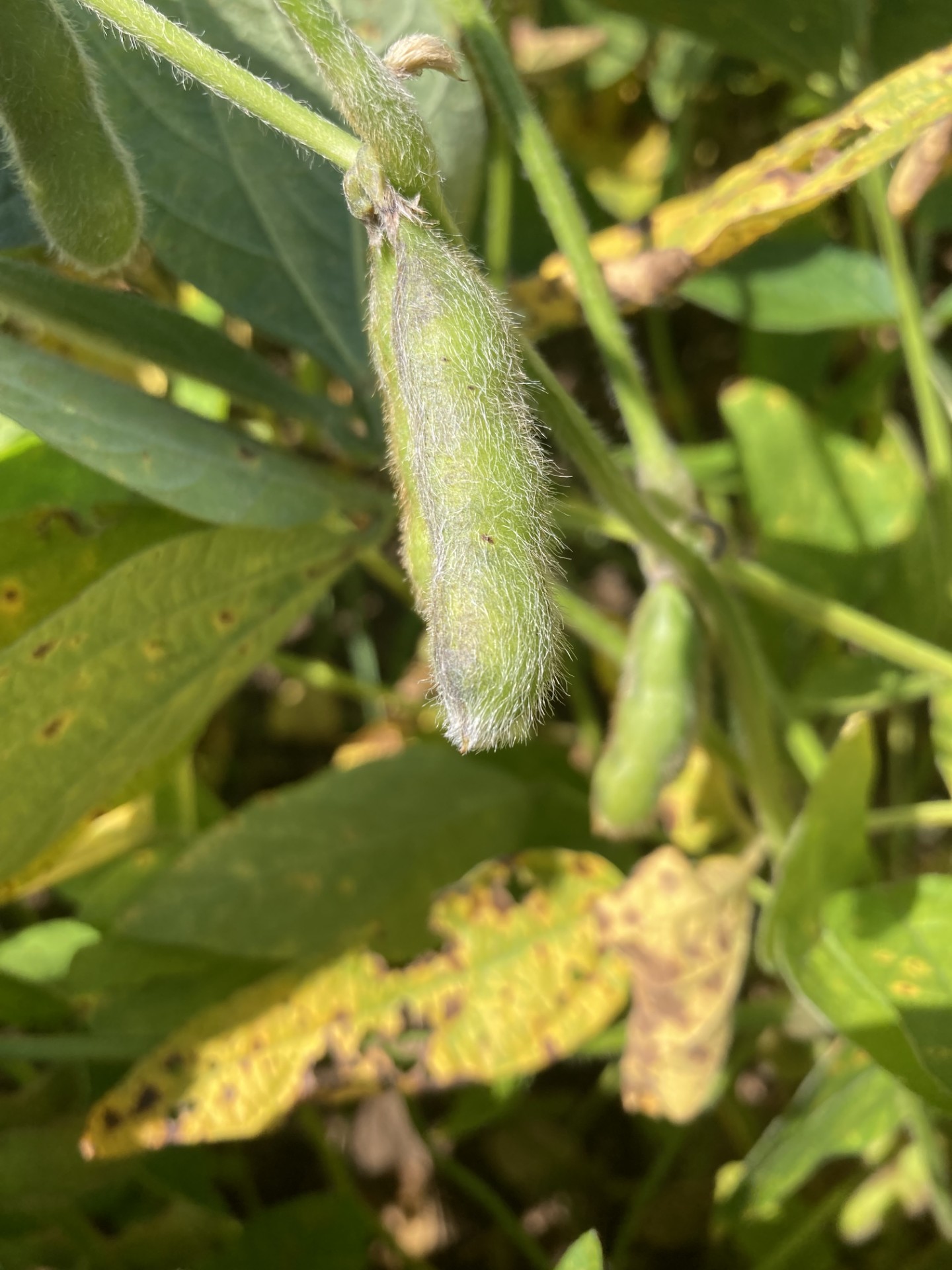
White mold continues to be present in some areas, particularly depressions in the field where water collects during large precipitation events. White mold can lead to lodging, wilting and whole plant death.
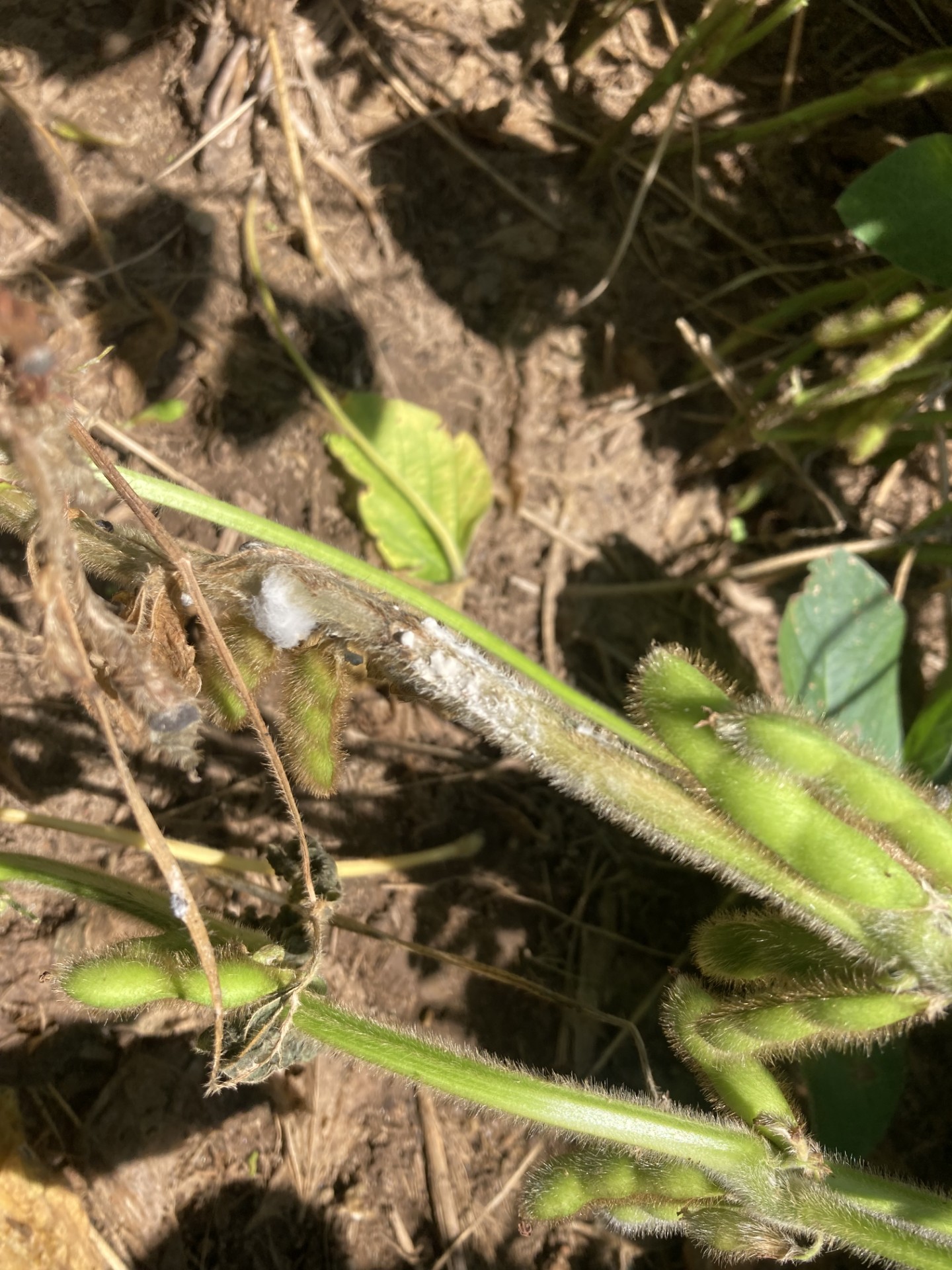
Corn is mostly between R4 (dough) and R5 (dent). Those that have reached R5 are progressing toward R6, which is physiological maturity for the kernel, at which point a black layer forms at the base of the kernel.

Most corn is past the most effective spray window of VT through R3 for tar spot. The Tarspotter app shows high tar spot risk in southwest Michigan for Aug. 22, 2024. Insect or wildlife damage to the ear can open channels for pathogens and lead to the development of Fusarium and/or Gibberella ear rots. Scouting for ear rot should occur before physiological maturity, and a high percentage of affected ears may necessitate earlier harvest to prevent further development of the mold.
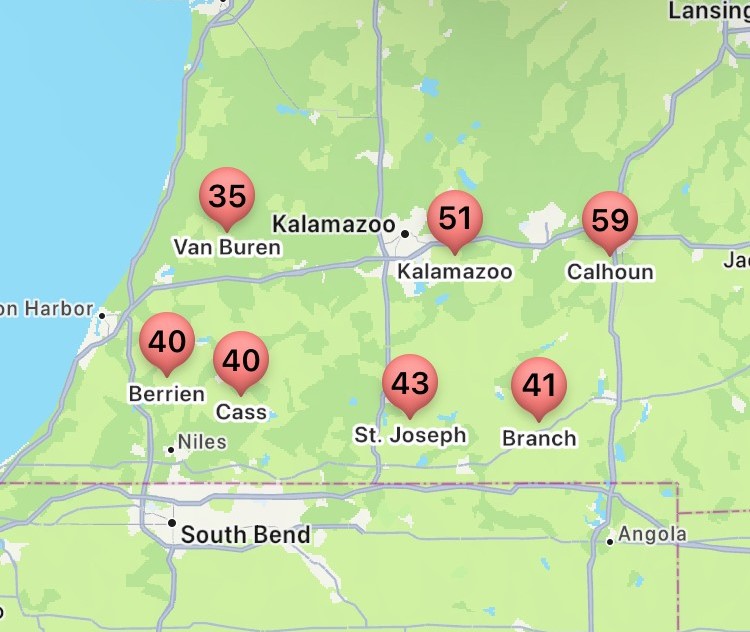
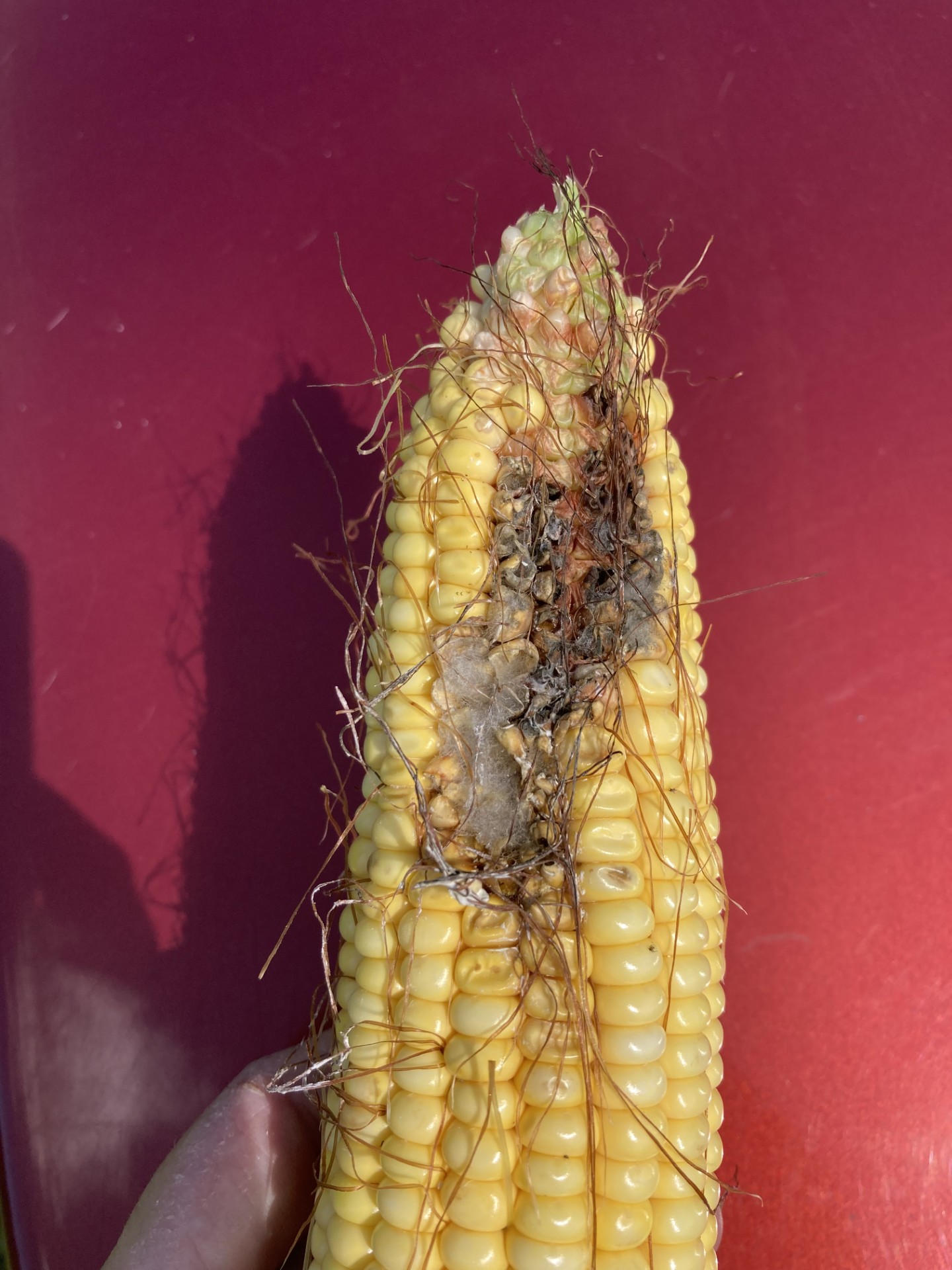
Early harvest of both chip and Russet potatoes is well underway. These early tubers go directly to packaging and/or processing. Harvest of potatoes for storage will start in a few weeks. Those tubers will be stored and shipped throughout the winter and into as late as next summer. Vine kill applications continued this week.
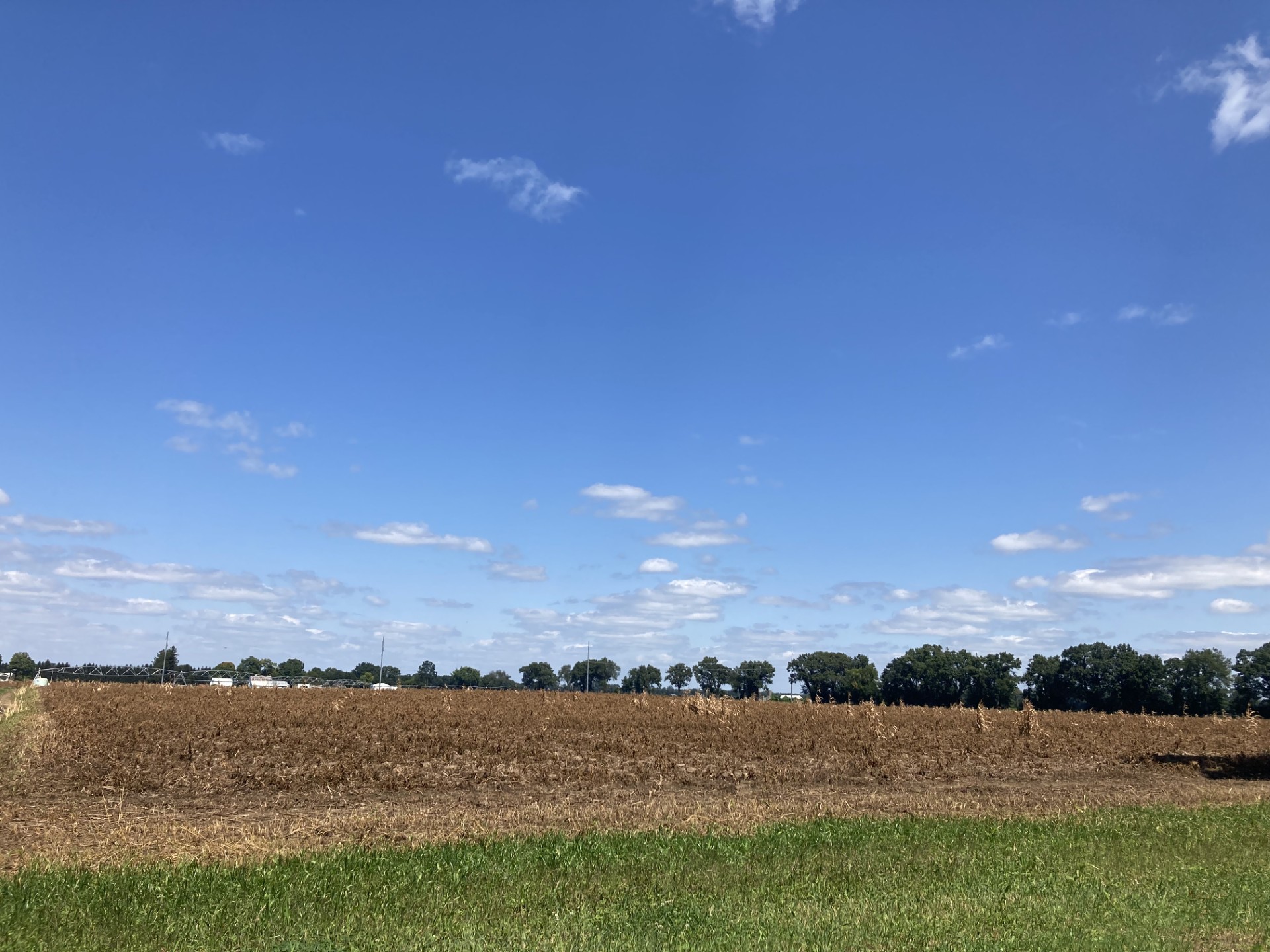
Alfalfa and forages continued to be cut or baled during the week. Some alfalfa is on its fourth cutting.
Weekly water use
|
Estimated weekly crop water use for field crops in Michigan (in/week) |
|
|||||
|---|---|---|---|---|---|---|
|
Crop |
Growth stage |
Constantine |
Entrican |
Hart |
|
|
|
Corn |
Silk, Blister, Dough, Begin dent |
1.27 |
1.22 |
1.27 |
|
|
|
Full dent |
1.15 |
1.11 |
1.15 |
|
||
|
Black Layer |
0.76 |
0.73 |
0.76 |
|
||
|
Soybeans |
R2 Full bloom |
1.27 |
1.22 |
1.27 |
|
|
|
R3 and R4 Begin pod/Full pod |
1.27 |
1.22 |
1.27 |
|
||
|
R5 and R6 Begin seed/Full seed |
1.27 |
1.22 |
1.27 |
-- |
||
|
R7 Begin Mature |
1.15 |
1.11 |
1.15 |
|
||
No major rainfall events were observed this week. Soybeans at the R5 and R6 stages, as well as corn in the dough and dent stages, will continue to have high water use. The goal for soybean irrigators should be to maintain at least 50% of the available soil water until the end of R7, or 50% have yellowed. Corn producers aiming to maximize test weight during dry late-summer conditions should similarly maintain at least 50% of soil water capacity until the crop reaches black layer. Typically, late August weather eases irrigation demands, requiring minimal water to achieve these goals. However, be mindful of disease risks that can be increased by prolonged plant moisture, such as white mold in soybeans and tar spot in corn. Make sure that any additional irrigation offers benefits that outweigh the increased disease risk. Several tools are available to help schedule irrigation, which can be found in the Irrigation Scheduling Tools - Factsheet #3.
The table above presents estimated crop water use for various field crops across three locations in Michigan. This data helps irrigation management decisions by showcasing potential crop evapotranspiration, calculated based on reference evapotranspiration and crop coefficients for each crop growth stage. It is crucial to note that crop water use values vary across regions due to differences in weather conditions, growth stages, agronomic practices and soil properties.
When using these values for irrigation scheduling, be mindful that they assume all applied irrigation water will be utilized by the plants without any loss. Also, these values do not account for any precipitation during the calculation week. For more tools and information on irrigation scheduling tools, please refer to: Irrigation Scheduling Tools.
Reference evapotranspiration data was obtained from Enviroweather, which also offers a model for determining potential crop evapotranspiration. To access this tool, visit Enviroweather, click on "Crops," select your crop and use the potential evapotranspiration tool by choosing your nearest weather station, the latest date of interest and other crop information.
Field Crops Virtual Breakfast Series

MSU soil fertility specialist Kurt Steinke spoke about lime for the MSU Extension Field Crops Virtual Breakfast this week. He mentioned that lime is a long-term investment, as it takes several months and even years to fully affect pH. As such, it is important to understand lime source options and other management practices that affect the efficacy of lime applications. Recordings of this and all the Virtual Breakfast meetings are closed-captioned and available at the Field Crops Virtual Breakfast webpage and the MSU Extension Field Crops Team social media platforms: Facebook, Spotify, YouTube, Apple Podcasts and Twitter.



 Print
Print Email
Email